Lockheed Martin showed the plan of the Martian orbital station and the descent vehicle

Mars Base Camp orbital station with the following modules: two Orion ships (one as an expedition module, the second as a control center), tanks with liquid oxygen and liquid hydrogen (at the same time protecting the crew from radiation), a residential module, a science lab, solar panels, radiators for cooling, cryogenic propulsion system (used for transport from the Moon to Mars and expeditions around Deimos and Phobos). Render: Lockheed Martin
Yesterday, at the 68th International Astronautical Congress in Adelaide, there was a Martian day. Ilon Mask spoke about the plans to build a Martian city , and Lockheed Martin showed its vision of the Mars Base Camp , which it hopes to bring to life on the request of NASA. This is a more distant project than Ilona Mask, but with government funding (if Lockheed Martin does get NASA in a row). In terms of time, it is consistent with the previously announced deadlines for the construction of the near-moon platform Deep Space Gateway , which will become a platform for launching transport and passenger ships to Mars.

Expeditionary module Mars Base Camp. Render: Lockheed Martin
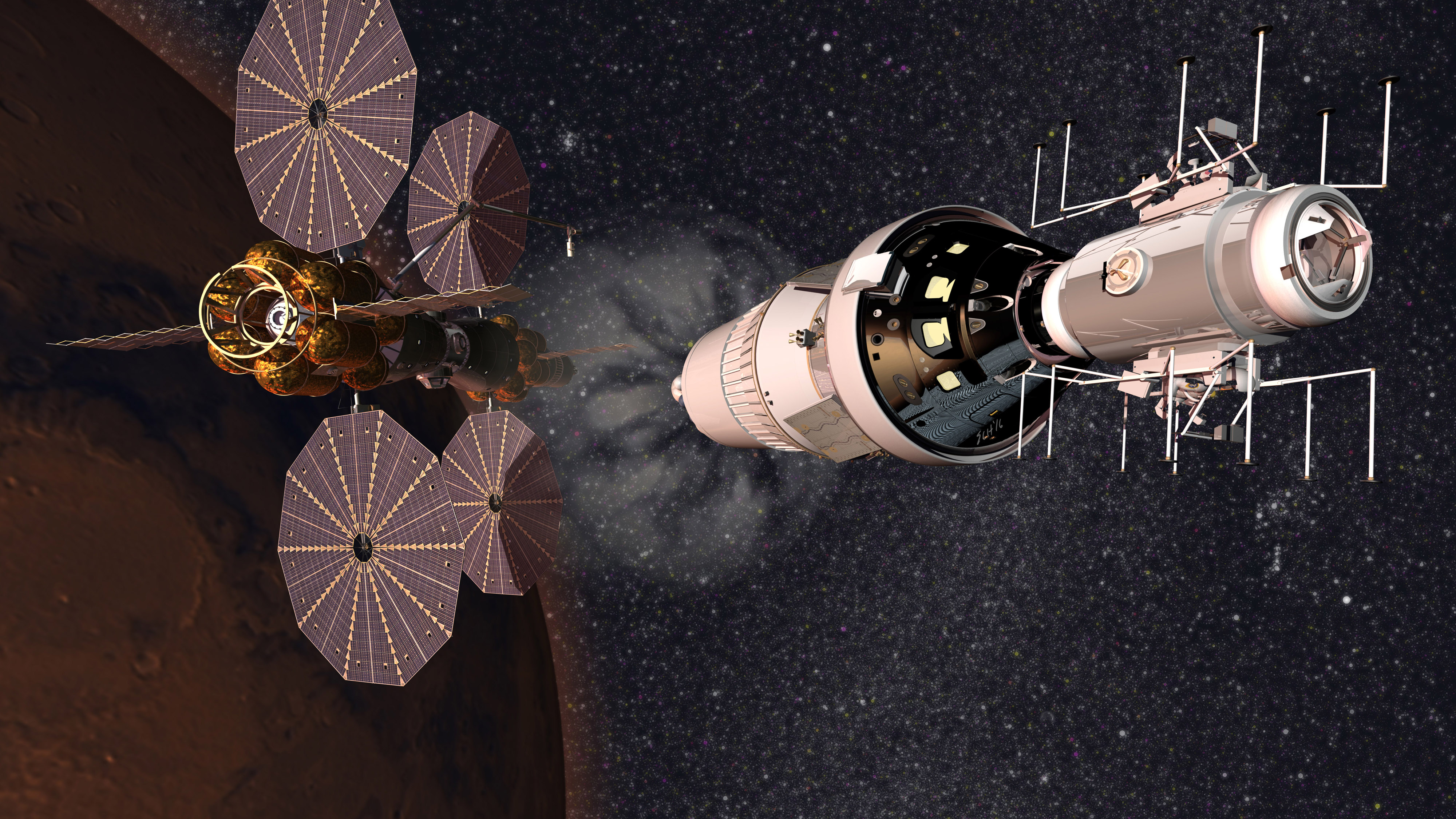
Expeditionary module Mars Base Camp. Render: Lockheed Martin
Unlike the SpaceX plan, Lockheed Martin represents the base camp as an orbiting station with a permanent human presence. It is from here that the astronauts will conduct research, sometimes descending to the surface of the planet for research purposes.
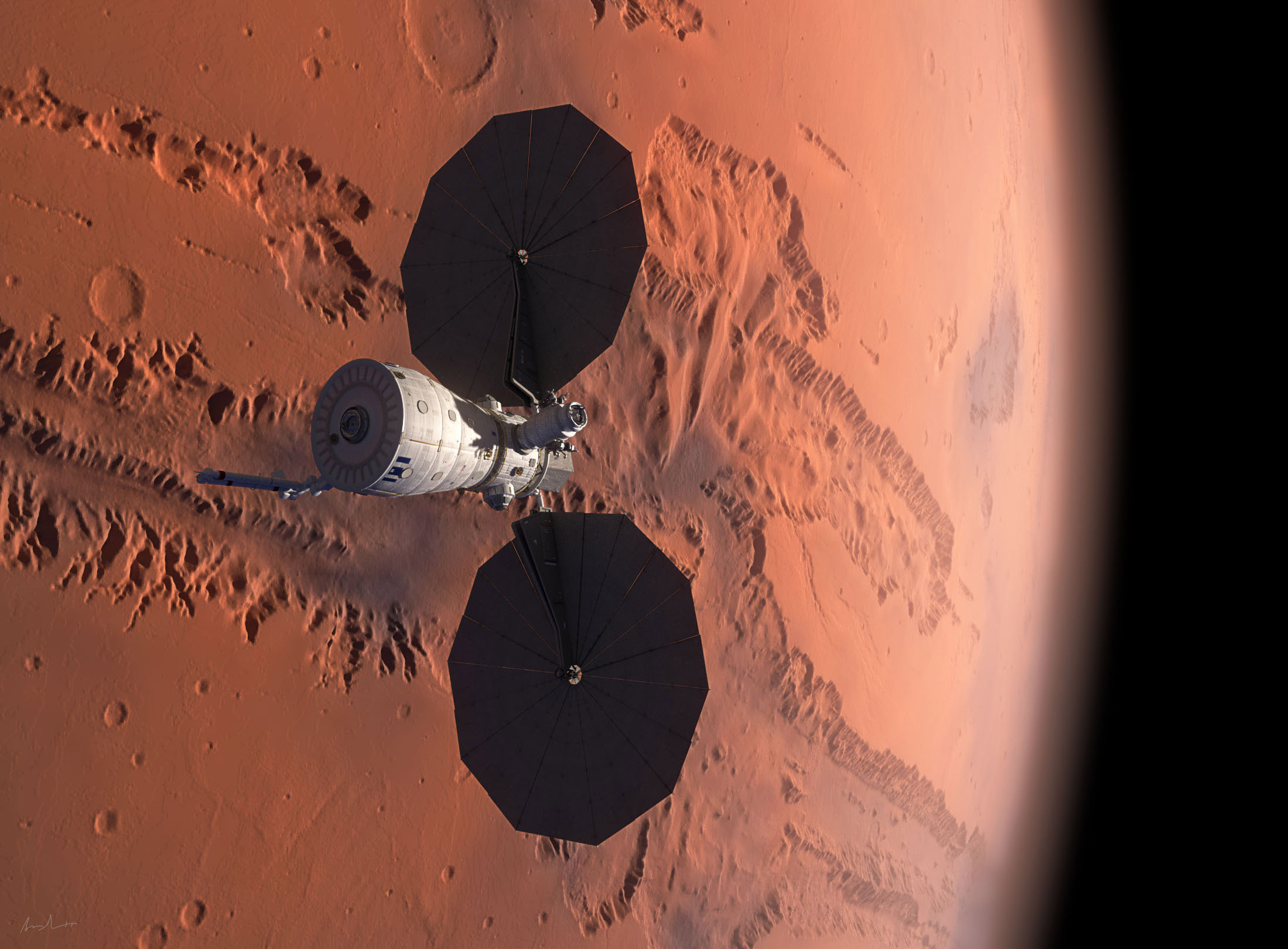
Mars Baseball Camp Mars Laboratory. Render: Lockheed Martin
Lockheed Martin introduced the concept of the orbital station and the manned descent vehicle.
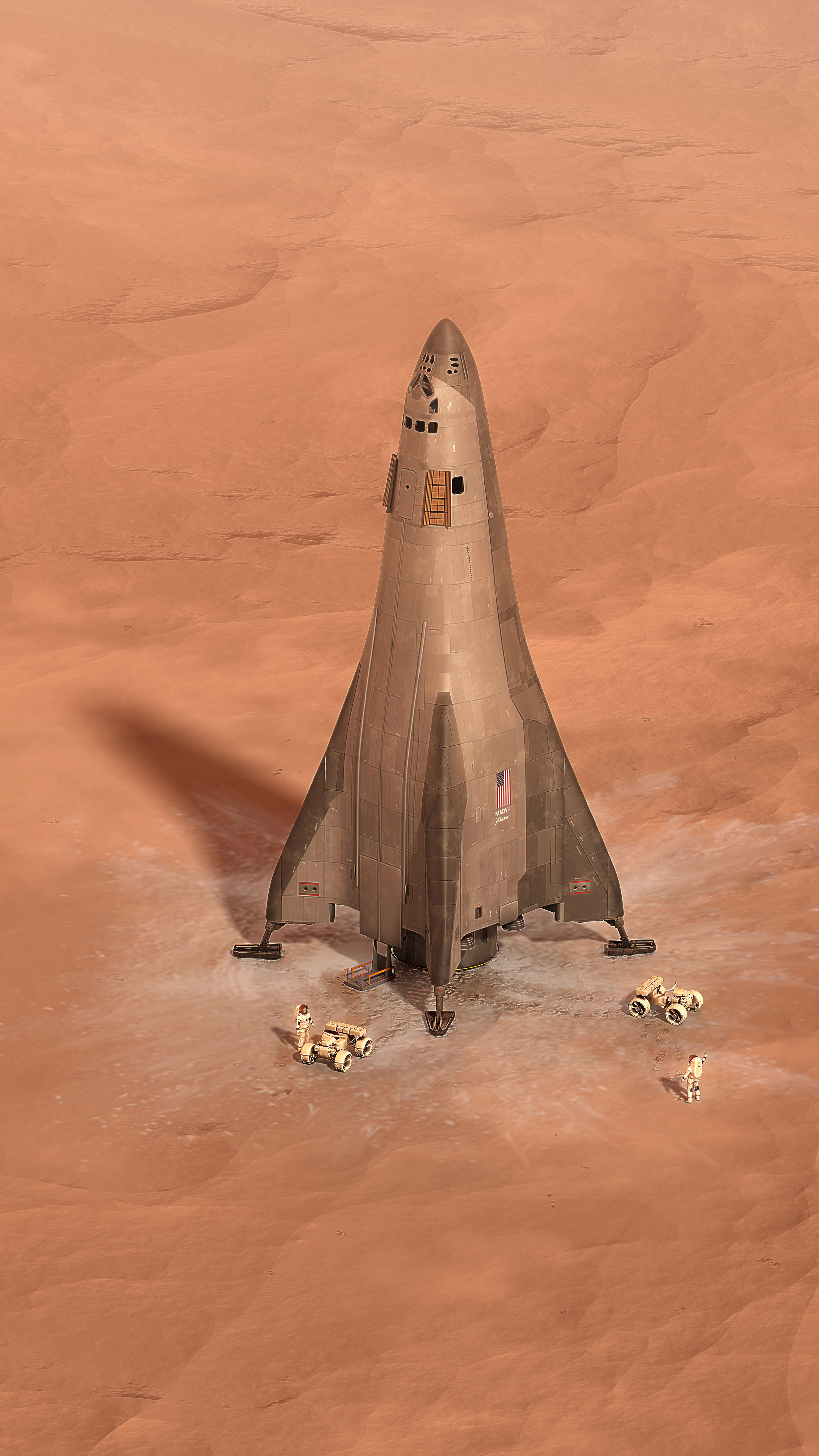
Mars Base Camp. The one-stage rocket uses the Orion ship systems on the command deck. Render: Lockheed Martin
The descent vehicle is able to land on the surface and ascend to the orbital station, joining with it.
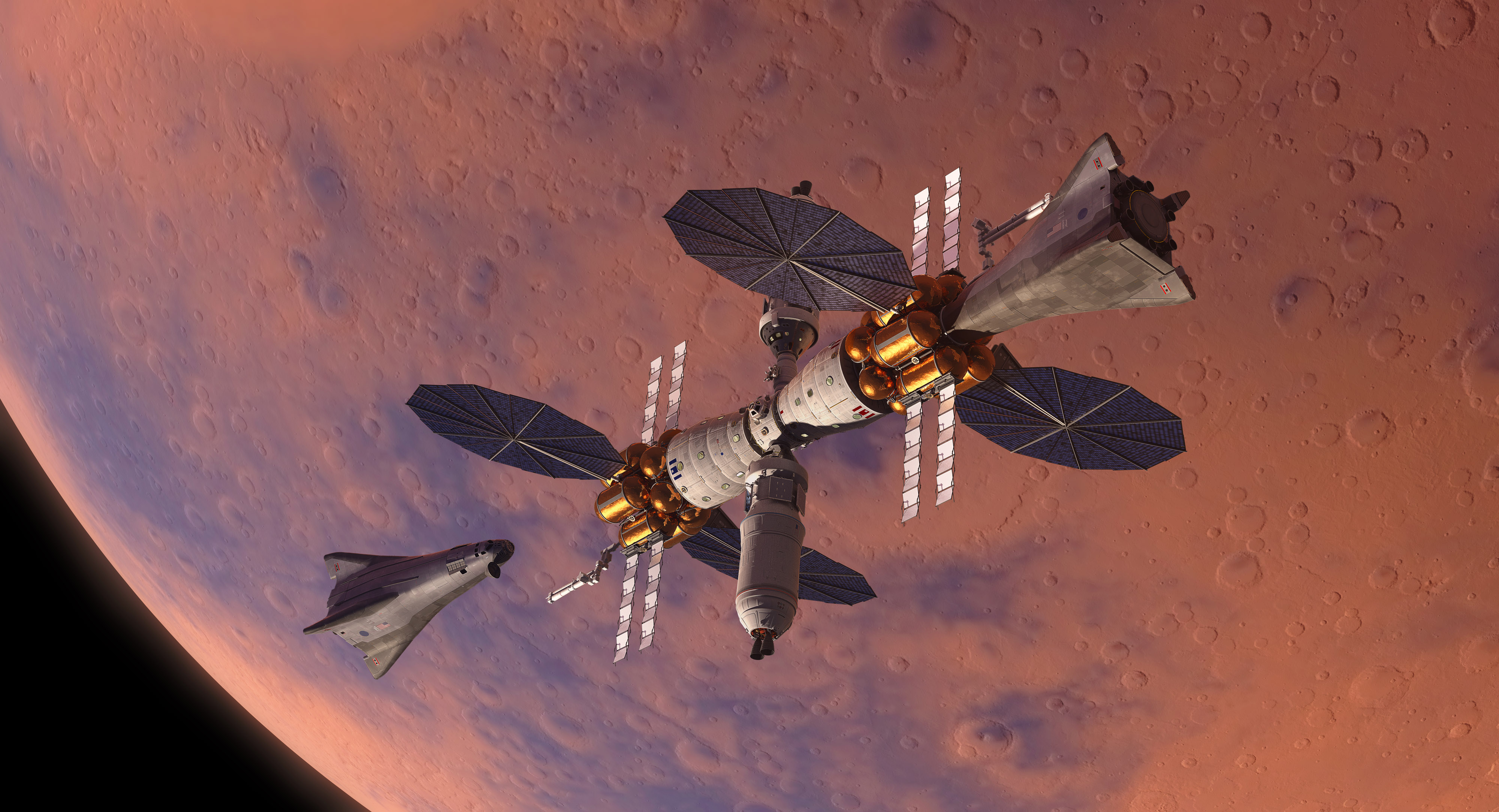
Docking of the space station and the Mars Base Camp descent vehicle. Render: Lockheed Martin
According to a press release from Lockheed Martin, the project is coordinated with Deep Space Gateway, the circumlunar platform, where the first modules are planned to be launched in the years 2024-2026. The timing of the Martian mission is not precisely defined. Depending on the success in the construction of the lunar spaceport and the development of the Deep Space Transport (DST) spacecraft, this may happen at the earliest in the early 2030s. Deep Space Transport is a reusable electric and chemical vehicle specially designed for flying in deep space. The ship will take people from the lunar spaceport, take them to Mars or to another destination - and then return back to the Moon. Here the ship can be repaired, filled - and sent to the next flight.
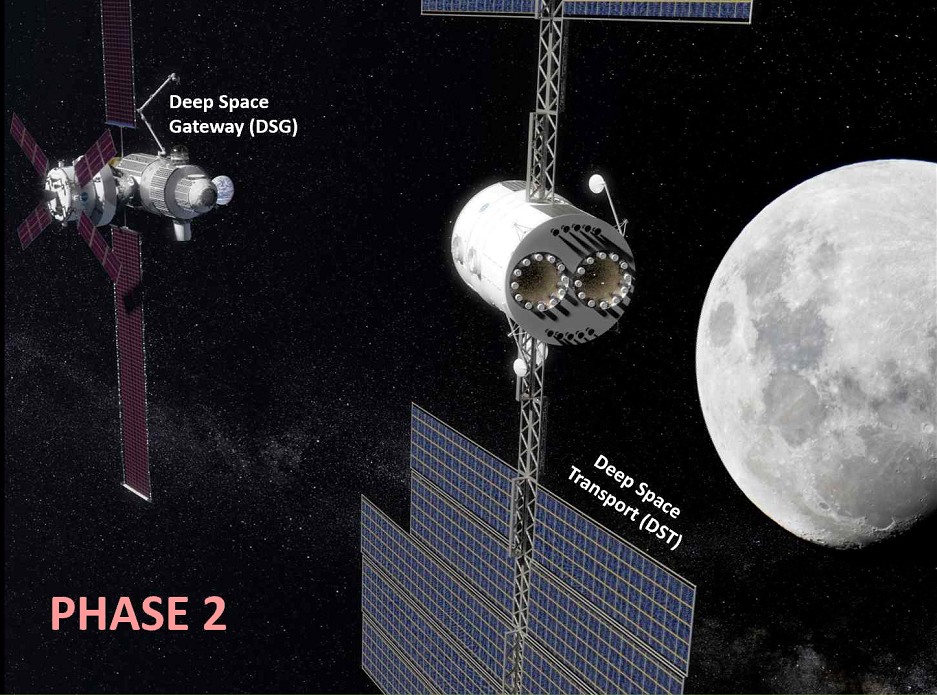
Testing of the ship will take place in the next decade, and at the end of the 2020s, NASA plans to conduct one-year tests of Deep Space Transport with the crew. Astronauts will spend 300-400 days in the near-moon space. This mission will be a dress rehearsal before sending astronauts to Mars. That is, earlier than in the early 2030s, the Mars mission of NASA cannot take place.
For comparison, Ilon Musk planned for 2022 the first cargo missions to Mars, and for 2024 - the landing of colonists.
Lockheed Martin's proposal is far from being so ambitious. It includes only three points:
- Transportation of astronauts from the Earth to the Martian orbit.
- Perform research.
- Search for landing sites on the surface of Mars.
According to Lockheed Martin's plan, the descent vehicle will be a reusable single-stage ship that is somewhat similar to the reusable shuttle or Buran. It will allow you to go down to the surface and spend up to two weeks there before climbing back to the base.
“Sending people to Mars has always been part of science fiction, but today we have the opportunity to translate it into reality,” said Lisa Callahan, vice president and general manager of the commercial civil space division at Lockheed Martin. - In partnership with NASA, our plan is designed with the equipment that is in development or in production. We are pleased to announce the availability of the Orion spacecraft in a working form and ready for a test flight of Exploration Mission-1, and then to Mars. ”
The three-week research mission called Exploration Mission-1 (EM-1) will be unmanned. The launch of the SLS with the Orion spacecraft will take place from the launch complex 39B at the cosmodrome of the S.A. Kennedy, presumably in 2019. In orbit, Orion will straighten the solar panels and head for the Moon. The impulse to the ship will be given by the Interim Cryogenic Propulsion Stage (ICPS) intermediate cryogenic propulsion system, which is located on the SLS launch vehicle just below the Orion ship, as the upper rocket stage. This will be the very first stage of the great road, which in the end should lead humanity to Mars. Wait is not long.
Mars Base Camp Presentation
All Articles